- Clone
- 104D2 (See other available formats)
- Regulatory Status
- RUO
- Other Names
- Stem cell factor receptor, c-kit, mast cell growth factor receptor, steel factor receptor
- Isotype
- Mouse IgG1, κ
- Ave. Rating
- Submit a Review
- Product Citations
- publications
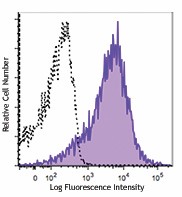
-

Human erythroleukemia cell line (HEL) was stained with CD117 (clone 104D2) Alexa Fluor® 647 (filled histogram) or mouse IgG1, κ Alexa Fluor® 647 isotype control (open histogram).
| Cat # | Size | Price | Quantity Check Availability | Save | ||
|---|---|---|---|---|---|---|
| 313235 | 25 tests | 123€ | ||||
| 313236 | 100 tests | 259€ | ||||
CD117 is a 145 kD protein tyrosine kinase also known as c-Kit. It is a receptor for stem cell factor or c-Kit ligand. CD117 is expressed on pluripotent hematopoietic progenitor cells (approximately 1-4% bone marrow cells), mast cells, and acute myeloid leukemia cells (AML). CD117 binding of c-Kit ligand induces phosphorylation of CD117 and stimulates proliferation and survival of primitive hematopoietic stem cells as well as erythroid-committed and granulo-monocytic committed cells.
Product DetailsProduct Details
- Verified Reactivity
- Human
- Reported Reactivity
- Cynomolgus, Cow
- Antibody Type
- Monoclonal
- Host Species
- Mouse
- Immunogen
- MOLM-1 megakaryocytic cell line
- Formulation
- Phosphate-buffered solution, pH 7.2, containing 0.09% sodium azide and BSA (origin USA)
- Preparation
- The antibody was purified by affinity chromatography and conjugated with Alexa Fluor® 647 under optimal conditions.
- Concentration
- Lot-specific (to obtain lot-specific concentration and expiration, please enter the lot number in our Certificate of Analysis online tool.)
- Storage & Handling
- The antibody solution should be stored undiluted between 2°C and 8°C, and protected from prolonged exposure to light. Do not freeze.
- Application
-
FC - Quality tested
- Recommended Usage
-
Each lot of this antibody is quality control tested by immunofluorescent staining with flow cytometric analysis. For flow cytometric staining, the suggested use of this reagent is 5 µl per million cells in 100 µl staining volume or 5 µl per 100 µl of whole blood.
* Alexa Fluor® 647 has a maximum emission of 668 nm when it is excited at 633 nm / 635 nm.
Alexa Fluor® and Pacific Blue™ are trademarks of Life Technologies Corporation.
View full statement regarding label licenses - Excitation Laser
-
Red Laser (633 nm)
- Application Notes
-
The 104D2 antibody does not block binding of c-Kit ligand. Additional reported applications (for the relevant formats) include: immunoprecipitation1, immunofluorescence microscopy1, and spatial biology (IBEX)4,5.
- Application References
- RRID
-
AB_2566222 (BioLegend Cat. No. 313235)
AB_2566223 (BioLegend Cat. No. 313236)
Antigen Details
- Structure
- Growth factor receptor with tyrosine kinase activity, subclass III, approximately 145 kD
- Distribution
-
Pluripotent hematopoietic progenitor cells (approximately 1-4% bone marrow cells), mast cells, acute myeloid leukemic cells (AML)
- Function
- Growth factor receptor for stem cell factor. Induces proliferation and survival of primitive hematopoietic progenitors. Potent inducer of proliferation in erythroid-committed progenitor cells. Defects in CD117 have been linked to severe anemia and a decreased number of hematopoietic progenitor cells.
- Ligand/Receptor
- c-Kit ligand
- Modification
- Multiple phosphorylation sites
- Cell Type
- Embryonic Stem Cells, Hematopoietic stem and progenitors, Leukemia, Mast cells, Mesenchymal Stem Cells
- Biology Area
- Immunology, Stem Cells
- Molecular Family
- CD Molecules
- Antigen References
-
1. Giebel LB, et al. 1992. Oncogene 7:2207.
2. Furitsu T, et al. 1993. J. Clin. Invest. 92:1736. - Gene ID
- 3815 View all products for this Gene ID
- UniProt
- View information about CD117 on UniProt.org
Related FAQs
Other Formats
View All CD117 Reagents Request Custom ConjugationCustomers Also Purchased
Compare Data Across All Formats
This data display is provided for general comparisons between formats.
Your actual data may vary due to variations in samples, target cells, instruments and their settings, staining conditions, and other factors.
If you need assistance with selecting the best format contact our expert technical support team.
-
Purified anti-human CD117 (c-kit)
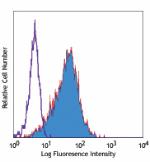
Human myeloid cell line TF-1 stained with purified 104D2, fo... -
PE anti-human CD117 (c-kit)
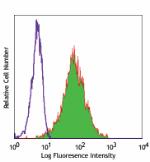
Human erythroleukemia cell line TF-1 stained with 104D2 PE 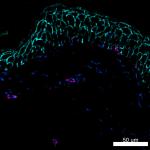
Confocal image of human skin sample acquired using the IBEX ... -
APC anti-human CD117 (c-kit)
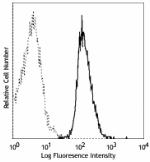
Human erythroleukemia cell line TF-1 stained with 104D2 APC -
Biotin anti-human CD117 (c-kit)
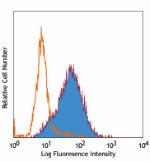
Human erythroleukemic cell line TF-1 stained with biotinylat... -
PE/Cyanine5 anti-human CD117 (c-kit)
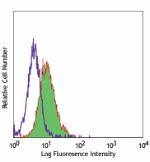
Human myeloid leukemia cell line TF-1 stained with 104D2 PE/... -
PE/Cyanine7 anti-human CD117 (c-kit)
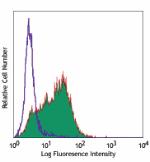
Human erythroleukemic cell line TF-1 stained with 104D2 PE/C... -
PerCP/Cyanine5.5 anti-human CD117 (c-kit)
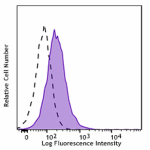
Human erythroleukemia cell line (HEL) was stained with CD117... -
Brilliant Violet 421™ anti-human CD117 (c-kit)
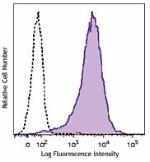
Human erythroleukemia cell line (HEL) was stained with CD117... -
Brilliant Violet 605™ anti-human CD117 (c-kit)
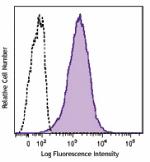
Human erythroleukemia cell line (HEL) was stained with CD117... -
Brilliant Violet 510™ anti-human CD117 (c-kit)
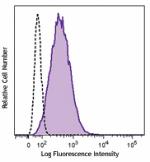
Human erythroleukemia cell line (HEL) was stained with CD117... -
Brilliant Violet 650™ anti-human CD117 (c-kit)
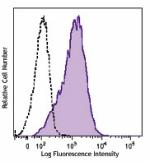
Human erythroleukemia cell line (HEL) was stained with CD117... -
Purified anti-human CD117 (c-kit) (Maxpar® Ready)
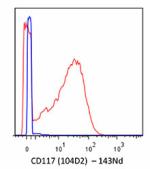
Human TF-1a erythroleukemia cells (red) and mouse EL4 T cell... -
PE/Dazzle™ 594 anti-human CD117 (c-kit)
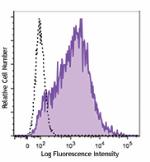
Human erythroleukemia cell line (HEL) was stained with CD117... -
APC/Cyanine7 anti-human CD117 (c-kit)
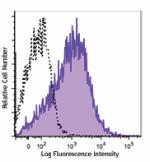
Human erythroleukemia cell line (HEL) was stained with CD117... -
Brilliant Violet 711™ anti-human CD117 (c-kit)
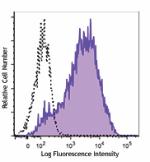
Human erythroleukemia cell line (HEL) was stained with CD117... -
FITC anti-human CD117 (c-kit)
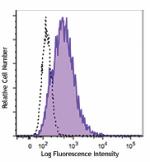
Human erythroleukemia cell line (HEL) was stained with CD117... -
Alexa Fluor® 488 anti-human CD117 (c-kit)
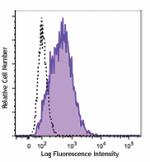
Human erythroleukemia cell line (HEL) was stained with CD117... 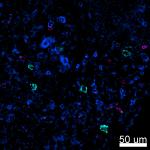
Confocal image of human lymph node sample acquired using the... 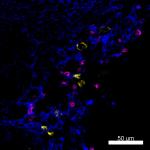
Confocal image of human lymph node sample acquired using the... -
Alexa Fluor® 647 anti-human CD117 (c-kit)
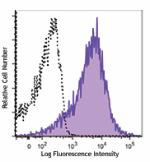
Human erythroleukemia cell line (HEL) was stained with CD117... -
APC/Fire™ 750 anti-human CD117 (c-kit)
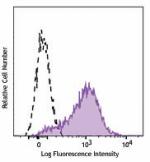
Human erythroleukemia cell line (HEL) was stained with CD117... -
Brilliant Violet 785™ anti-human CD117 (c-kit)
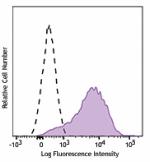
Human erythroleukemia cell line (HEL) was stained with CD117... -
PE anti-human CD117 (c-kit)
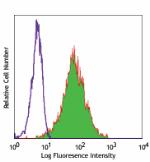
Typical results from human erythroleukemia cell line TF-1 st... -
APC anti-human CD117 (c-kit)
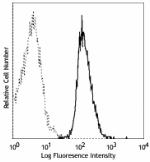
Typical results from human erythroleukemia cell line TF-1 st... -
TotalSeq™-A0061 anti-human CD117 (c-kit)
-
TotalSeq™-C0061 anti-human CD117 (c-kit)
-
TotalSeq™-B0061 anti-human CD117 (c-kit)
-
Alexa Fluor® 700 anti-human CD117 (c-kit)

Human peripheral blood mononuclear cells were stained with C... -
Spark NIR™ 685 anti-human CD117 (c-kit) Antibody
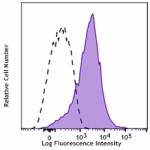
Human erythroleukemia cell line (HEL) was stained with anti-... -
APC/Fire™ 750 anti-human CD117 (c-kit)
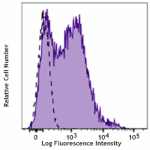
Typical results from human erythroleukemia (HEL) cell line s... -
TotalSeq™-D0061 anti-human CD117 (c-kit)
-
PE/Cyanine7 anti-human CD117 (c-kit)
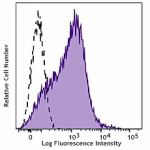
Typical results from human erythroleukemia (HEL) cell line s... -
PE/Dazzle™ 594 anti-human CD117 (c-kit)
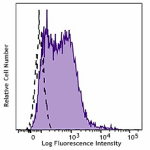
Typical results from human erythroleukemia (HEL) cell line s... -
PerCP/Cyanine5.5 anti-human CD117 (c-kit)
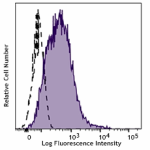
Typical results from human erythroleukemia (HEL) cell line s... -
GMP APC anti-human CD117 (c-kit)
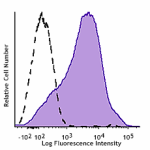
Typical results from human erythroleukemia cell line TF-1 st... -
GMP PE anti-human CD117 (c-kit)
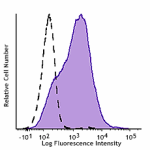
Typical results from human erythroleukemia cell line TF-1 st... -
Spark Red™ 718 anti-human CD117 (c-kit) (Flexi-Fluor™)
 Login / Register
Login / Register 










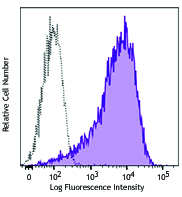
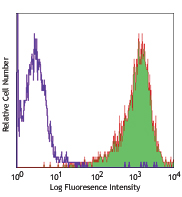

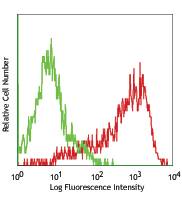



Follow Us